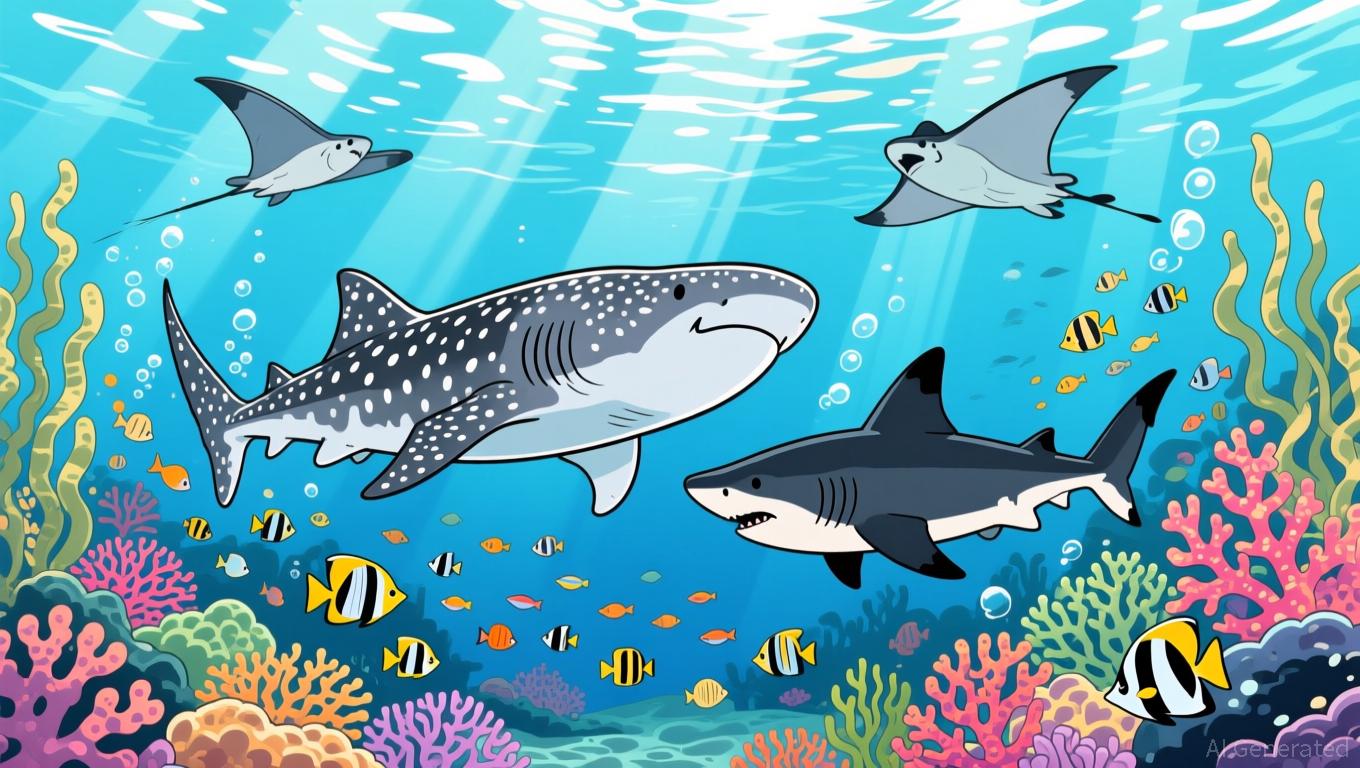CITES and Instant DNA Technology Aim to Uncover Covert Shark Trade and Prevent Species Disappearance
- CITES CoP20 in Uzbekistan proposes historic protections for 12 shark/ray species via Appendix I listings and stricter Appendix II monitoring. - Genetic testing reveals illegal shark trade volumes exceed official records by 10-70x, with Hong Kong as a key trafficking hub despite zero-export claims. - Portable DNA tools now enable real-time identification of 38 CITES-listed species, aiding enforcement in Indonesia, Ecuador, and other source countries. - Experts stress CITES is critical to prevent extinctio
At the 20th Conference of the Parties to the Convention on International Trade in Endangered Species (CITES CoP20), held in Samarkand, Uzbekistan, government representatives are at a crucial crossroads to prevent the disappearance of whale sharks, manta rays, and other highly threatened marine animals. Currently, more than 37% of shark and ray species are at risk of extinction, with pelagic shark numbers having dropped by over 70% in the past five decades and

The measures being discussed at CoP20—with backing from over 50 nations—would provide the most extensive protections for sharks and rays ever seen under CITES. These proposals include moving the oceanic whitetip shark, all manta and devil rays, and whale sharks to Appendix I, effectively banning international commercial trade. Zero export quotas are suggested for wedgefish and giant guitarfish, while species such as gulper sharks and smoothhound sharks would be added to Appendix II, requiring tighter oversight
The need for immediate action is highlighted by a recent Science Advances study, which discovered that fins from species listed under CITES, such as oceanic whitetip and hammerhead sharks, are found in markets at rates 10 to 70 times higher than what is officially reported. For instance, 81% of countries exporting shark fins claimed no exports of threatened species, even though DNA evidence traced the fins back to their waters. Hong Kong continues to be a major trade center, with many source countries failing to report the quantities uncovered by genetic testing.
To address this, marine biologist Diego Cardeñosa from Florida International University has created a portable DNA testing device that can instantly identify protected shark and ray species. The tool, tested on 55 species—including 38 listed by CITES—can detect unknown species and provide immediate proof for authorities. Cardeñosa points out that without fast identification methods, illegal shipments often go unnoticed, weakening global conservation efforts. The technology, which can also be used for turtles and mammals, is now being used in countries such as Indonesia and Ecuador to help stop trafficking.
Luke Warwick, who leads the Wildlife Conservation Society's (WCS) shark and ray initiative, emphasized that "CITES remains the most powerful international mechanism to ensure that wildlife trade does not push species to extinction." Dr. Susan Lieberman of WCS further noted that the proposed listings "align CITES with other international commitments and clearly demonstrate the global intent to safeguard these species before it is too late"
The outcomes of CoP20 may decide the fate of these vital species. As top predators and key ecosystem engineers, sharks and rays are essential for maintaining marine biodiversity and the stability of fisheries.
Disclaimer: The content of this article solely reflects the author's opinion and does not represent the platform in any capacity. This article is not intended to serve as a reference for making investment decisions.
You may also like
Dogecoin News Today: Meme Coins Achieve Recognition as Institutional Investors and ETFs Drive Market Changes for 2025
- WLFI's acquisition of Solana-based meme coin SPSC triggered a 139.8% price surge, highlighting institutional interest in meme tokens. - Binance's listing of Dank Penguin and BNBHolder boosted their market caps past $5 million, showcasing exchange-driven momentum in meme coin ecosystems. - Dogecoin's ETF debut via Bitwise's BWOW and Grayscale's GDOG signals growing institutional validation, despite mixed initial performance compared to Solana/XRP ETFs. - 2025 could solidify meme coins and altcoin ETFs as

Bitcoin News Today: Bitcoin Whale Bets $84 Million—Sign of Faith or Disaster Looming?
- A Bitcoin whale opened an $84.19M 3x leveraged long on Hyperliquid after securing $10M in profits, amplifying market volatility and liquidity risks. - Other whales added 20x-25x leveraged positions totaling $75M in BTC/ETH, reflecting heightened confidence in short-term price resilience amid December 2025's 3.64% BTC and 3.79% ETH gains. - Analysts debate the rally's sustainability, citing weak Sharpe ratios (-36% Bull-Bear Index), 30% drawdown from peaks, and structural liquidity challenges favoring ran

Hyperliquid News Today: Avici Soars 1,700%—Is It MoonPay Buzz or Genuine Market Movement?
- Avici (AVICI) surged 1,700% amid speculation of a MoonPay partnership, now valued at $90.7M with $2.5M liquidity. - Analysts highlight its neobank narrative, competing with projects like Cypher while facing $50–$500 price targets implying $1B–$5B valuations. - Security risks persist, exemplified by Upbit's $36M hack and Trezor CEO's warnings on exchange vulnerabilities. - Avici's success hinges on balancing innovation with compliance, regulatory clarity, and execution amid a crowded crypto debit card mar
Bitcoin News Today: Bitcoin Recognized as a Mainstream Asset as Nasdaq Lists IBIT Alongside Leading ETFs
- Nasdaq's ISE proposes tripling Bitcoin options limits for BlackRock's IBIT to 1 million contracts, aligning it with major ETFs like EEM and GLD . - The move reflects IBIT's dominance as the largest Bitcoin options market by open interest, driven by institutional demand for hedging and speculation. - Analysts highlight the normalization of Bitcoin as a tradable asset class, with unlimited FLEX options and JPMorgan's structured notes signaling broader institutional adoption. - Regulatory alignment with gol
